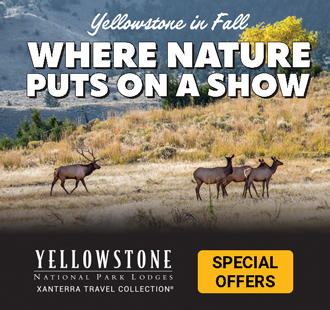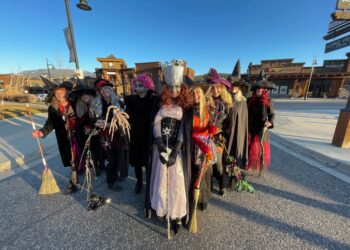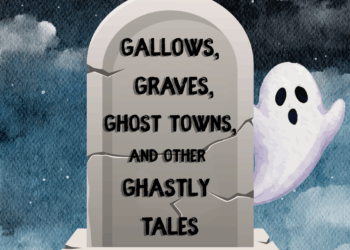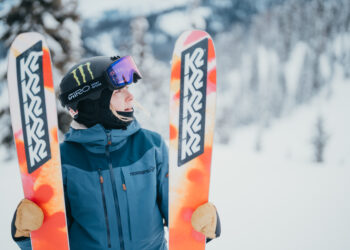
By Todd Wilkinson EBS ENVIRONMENTAL COLUMNIST
Does mountain biking impact wildlife any more than hikers and horseback riders do?
More specifically, could rapidly-growing numbers of cyclists in the backcountry of Greater Yellowstone negatively affect the most iconic species: grizzly bears?
It’s a point of contention in the debate over how much of the Gallatin Mountains, managed by the U.S. Forest Service, should receive elevated protection under the 1964 Wilderness Act. The wildest core of the Gallatins, which begin in Yellowstone National Park and extend northward, is the 155,000-acre Hyalite Porcupine Buffalo Horn Wilderness Study Area.
The fate of the Gallatins is considered a national conservation issue, given its importance to the health of the ecosystem holding Yellowstone.
The Gallatin Forest Partnership, led by the Greater Yellowstone Coalition, The Wilderness Society, Montana Wilderness Association and aligned with mountain biking groups, is seeking to have around 100,000 acres protected as wilderness in the Gallatins, but it doesn’t include the Hyalite Porcupine Buffalo Horn.
Meanwhile, another group, Montanans for Gallatin Wilderness and influential allies, wants twice that amount elevated to wilderness status, especially the Buffalo Horn-Porcupine. They say they aren’t anti-mountain biking; rather, they are “pro-grizzly bear” and favor foresighted wildlife protection in an age of climate change, a rapidly-expanding human development footprint emanating from Bozeman and Big Sky, and rising levels of outdoor recreation.
One flashpoint playing out publicly has been an online forum called the Bozone Listerv, which functions essentially as a digital community bulletin board. There, cycling advocates have claimed that riding their bikes in grizzly country does not cause serious impacts.
If the Hyalite Porcupine Buffalo Horn has its status elevated from being a wilderness study area to full capital “W” wilderness, motorized users as well as mountain bikers would be prohibited. However, illegal incursion and blazing of trails by motorized users and mountain bikers have already occurred in the wilderness study area with little enforcement coming from the Forest Service.
“So far I have only seen people who want mountain bikers to sacrifice and the assumption [is] that this will help wildlife,” wrote Adam Oliver, founder of the Southwest Montana Mountain Bike Association recently on the Bozone Listserv. “Show me the science, prove me wrong or be willing to give up something yourself.”
Oliver need only contact Dr. Christopher Servheen. Servheen, retired from government service, spent four decades at the helm of the U.S. Fish and Wildlife Service’s Grizzly Bear Recovery Team.
“I do believe that mountain bikes are a grave threat to bears—both grizzly and black bears—for many reasons and these are detailed in the Treat report and recommendations,” Servheen said. “Bikes also degrade the wilderness character of wild areas by mechanized travel at abnormal speeds.”
By “Treat report,” Servheen is referring to a multi-agency Board of Review investigation into the death of Brad Treat who was fatally mauled by a grizzly on June 29, 2016, after colliding with the bear at high speed near the town of East Glacier, just outside of Glacier National Park in Montana. Servheen chairs that board and others investigating fatal bear maulings.
Investigators surmised that Treat was traveling at between 20 and 25 miles an hour and rode into the grizzly around a sharp turn in the trail, leaving him only a second or two to respond.
Denial about impacts on wildlife is a common defensive response from mountain biking groups now pushing for construction of more riding trails on public lands, seeking to reduce the size of areas being proposed for federal wilderness status, and even enlisting lawmakers to amend the federal Wilderness Act so they can gain more access to wild country.
Servheen and others have seen claims made by mountain bikers who try to suggest there is no scientific evidence they’re affecting wildlife. “Some selfish and self-centered mountain bikers are especially prone to this,” he said. “The key factors of mountain biking that aggravate its impact on wildlife are high speed combined with quiet travel. These factors are exactly what we preach against when we tell people how to be safe when using bear habitat.”
According to Servheen and others, capital “W” wilderness areas are biologically important for bears because they are notably different from the busy pace of human uses found on public lands managed for multiple use.
“Wild public lands that currently have grizzly bears present have those bears because of the characteristics of these places: visual cover, secure habitat, natural foods, and spring, summer, fall and denning habitat,” Servheen said. “All these factors can be compromised by excessive human presence, high speed and high encounter frequencies with humans.” He provides a fuller recitation of the science in a May article published by “Mountain Journal.”
Ecosystem-wide, mountain bikers already have thousands of miles to ride on public land, so they need not be in core grizzly habitat, he said.
Wildlife, however, does not have such a range of options. “As human use increases, the importance of areas where there is little or rare use by humans increases,” Servheen said. “If recreation increases to the point that bears have few secure places to be, then there can be many complex impacts. I worry less about direct deaths than I do about continual displacement and stress on bears trying to avoid humans wherever they go.”
What’s the key to keeping free-ranging wildlife populations on the landscape? “Intactness is the first thing that comes to mind. There are few places left intact in our highly fragmented world,” says Gary Tabor, president of the Center for Large Landscape Conservation based in Bozeman.
“I think mountain biking and rapid recreational expansion into the backcountry is symptomatic of a growing push to build roads and sub-roads and trails everywhere we want to go without regard for the other beings out there,” Tabor said.
Todd Wilkinson is the founder of Bozeman-based “Mountain Journal” (mountainjournal.org) and is a correspondent for “National Geographic.” He’s also the author of “Grizzlies of Pilgrim Creek” about famous Jackson Hole grizzly bear 399, which is available at mangelsen.com/grizzly.














